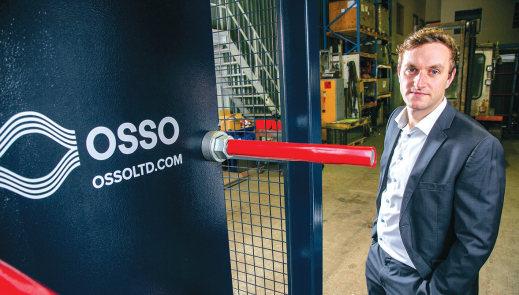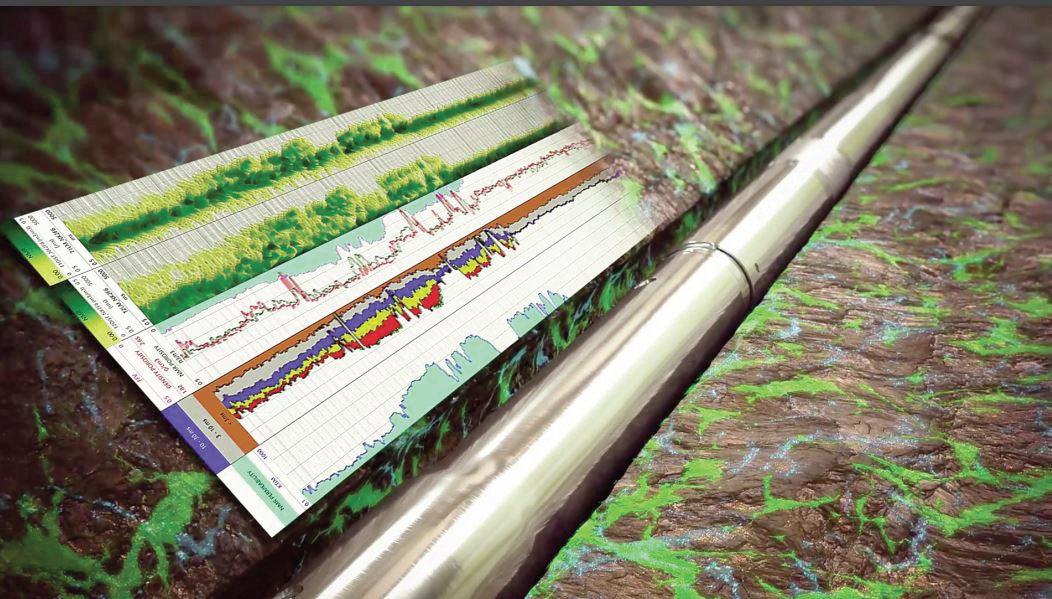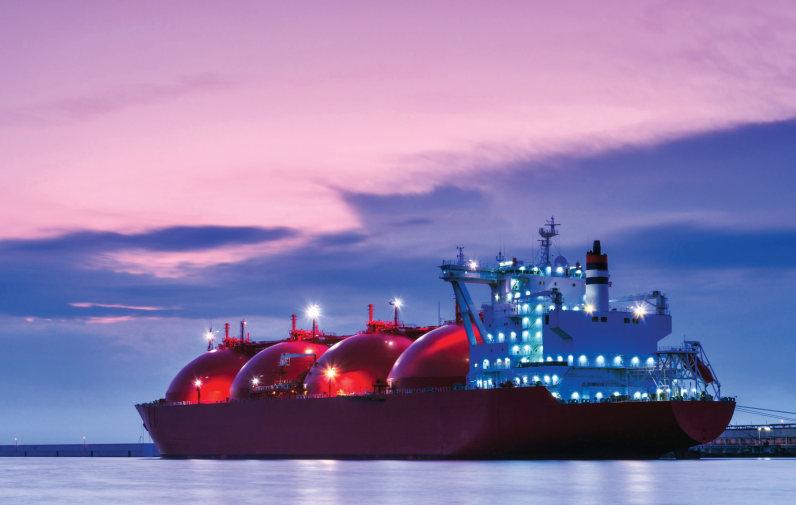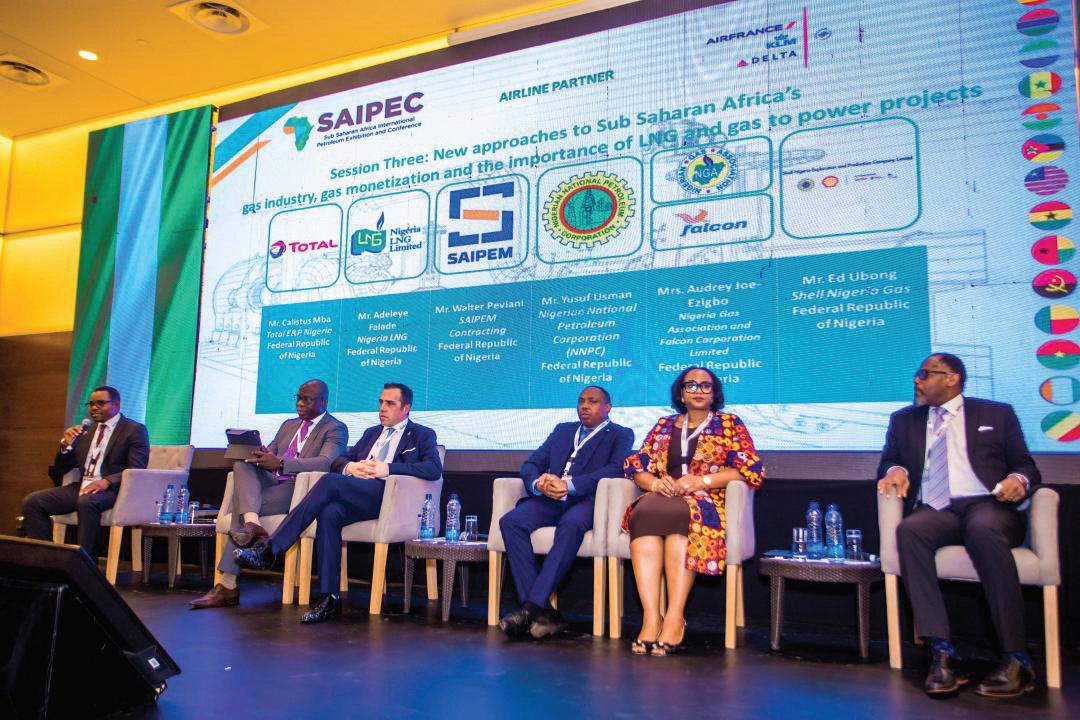
19 minute read
Pumps
WAYS TO KILL YOUR CENTRIFUGAL PUMP
Centrifugal pumps are reliable, low maintenance pumps. They are responsible for more than 40% of all fluid transfer in industry worldwide. A centrifugal pump is a low maintenance, if well selected, reliable part in your process.
THE CENTRIFUGAL PUMP has a very simple principle. Due to centrifugal forces caused by a spinning impeller, liquid is sucked in at inlet and pressure is built at the outlet. No valves are needed, and there are few moving parts.
However, there are some other essentials that can influence the results of the pumping process and can even damage the pump severely. Here are the most important points to consider to avoid damage and create a reliable, safe pumping process with hygienic pumps.
Selection of the right pump size
Centrifugal pumps have a very atypical performance curve compared to positive displacement pumps. When the counterpressure in the pump will go down, the flow will go up and the used motor power will follow the flow. From the moment that the pump will need more power compared to the nominal power, it will start overloading and will heat up. If this process is lasting too long the isolation from the motor windings will burn and will cause an electric failure. Therefore, it is very important that the entire process is taken into account when selecting the pump.
Select the right mechanical seal
other. In normal conditions there is always a film of liquid between the seal faces that guarantees the lubrication of the seal. If, of course, there is no fluid in the pump or the pump is sucking a lot of air, the seal faces will run dry and start to heat up. The elastomers in the mechanical seal will get burned and lose there sealing capability.
Select the right installation format to avoid cavitation
This is a typical problem when for example the piping of the system at the suction side of the pump is not configured correctly. To prevent this problem in critical applications, and in fact in all cases, choose a pump with a very low NPSHr value, which will be able to work in tough conditions. With Capdata the perfect installation scheme can be configured.
Select the correct process installation system to avoid water hammer
Water hammer is a typical problem that occurs in process systems with long lines and large piping diameters. This happens when a huge mass of fluid hits a fast closed valve and in reaction, sends a peak pressure back into the system that passes the centrifugal pump. This is a problem that has to be solved in the process installation by selecting slower valves and/or shorter piping, wherever this is possible.
The pumping of foreign objects
When the fluid flow is contaminated with objects such as bolts, nuts or other foreign objects your impeller will be stuck because there is only limited free space. Even if the pump is equipped with a free flow impeller or a channel impeller (where objects as big as potatoes are pumped with), metals or hard pieces will, in most cases, not pass the pump but will be stuck between the pump and the pump housing. The impeller, pump casing and/or bearings will be damaged.
Pumping abrasive fluids? Select a duplex pump
When your process needs a hygienic pump, but the fluid is very abrasive, it is a good option to select a mechanical seal made of SiC/SiC with hard seal faces. But there is another problem to overcome: it is important for a hygienic pump that all wetted parts (including O rings) are in the fluid stream to ensure that the pump can be cleaned properly during CIP.
Selecting the right seal for variable or high system pressures
Most hygienic pumps running at simple process conditions are equipped with bellow seals. The pressure between the seal faces is mostly dependent on the inlet pressure. With high inlet peaks some cluttering from the mechanical seal can occur, which will damage the seal faces by impact. But in the end a continuous higher inlet pressure at bellow mechanical seals will also create a huge wear from the seal faces. Both of these problems can be solved with a balanced/sterile mechanical seal that is independent from the inlet pressure.
Install motors with condensation holes to kill humidity
Every electric motor must have an IP rate which indicates the degree of resistance against dirt and water penetration. Unfortunately there is no rating for the humidity resistance. When an electric motor runs it will heat up. Thus, the air in the motor will expand and there will be air that will exit the motor.
Frequency converter and connections
Too long wires without a filter will cause EMC and isolation problems. With larger motors this can cause bearing damage. Bad electric connections will cause that the motor runs on one winding instead of three and will cause it to burn.
TRANSFORMING PIPELINE OPERATIONS WITH DIGITAL TECHNOLOGIES
Saul Zambrano, global industry director, energy and utilities digital transformation leader, Software AG, discusses how digital technologies can help pipeline operators.
What are the main asset management challenges facing pipeline operators?
One of the greatest challenges facing the oil and gas sector is that the industry is stuck at the moment. While overall pandemic-related demand reduction has stabilised, no one is quite sure when a return to normal will happen and what it looks like. And while everyone can agree that accelerating “digital transformation” initiatives will be good for the bottom line; the reality is that almost all oil and gas companies are in cash conservation mode –which limits their appetite for transformation projects. Fortunately for pipeline operators, their business model is moving in the opposite direction. First, pipeline and storage companies are seeing their cash balances grow as a large percentage of contracted volumes are under long-term contracts. Second, storage revenues have increased as the industry is still producing more oil and gas than the world can consume, which has inflated storage fees.
And quite a few pipeline operators are taking advantage of this window of profitability to accelerate their digital transformation initiatives.
The greatest areas of focus on improved asset management is centered on three areas: 6 How can blockchain technologies be utilised to make the custody transfer process more secure and efficient? 6 How can they create more real time visibility of asset performance to assist in capacity and maintenance planning? 6 In the age of increasing concerns of the industries impact on carbon emissions, what types of technologies are available to monitor and mitigate Scope 1 carbon emissions?
How can IIOT technologies help operators to manage their pipeline assets more effectively and obtain visibility across their operations?
One of the greatest challenges facing pipeline operators is that a fair amount of industry standard pipeline management practices are built on fragmented data. When one looks at the number of assets that are deployed by multiple vendors across both pipeline and storage operations, the challenge of data integrity becomes evident. For each asset vendor there is a different set of data points being generated. Harmonising this data so that it is normalised and made actionable is not a trivial exercise. Compounding this problem is that a large percentage of these assets are not being centrally monitored through digital technologies. As a result, data is not being recorded or being recorded manually. A fully capable industrial IoT platform must have the ability to connect to both legacy PLC and RDU sensors, as well as greenfield sensors that are deployed to create more visibility. And as this capability is enabled, an integrated view of operations is created where data is available, timely, and easy to access by the resources who need it.
How can predictive analytics, machine learning and AI help to pinpoint problems before they occur, and promote better decision making?
Most asset maintenance procedures are preventative in nature. This is primarily driven by the fact that many field assets have not been digitalised. Consequently, if asset performance data is being logged through manual processes, it is not being done, according to a standardised data model across operations. As a result, while the capabilities of AI/ML enabled predictive analytics have been documented across multiple industries, the oil and gas sector suffers from lack of data quality. Unfortunately, this low data quality limits the ability to deploy AI/ML capabilities.
What are the benefits of migrating to the cloud for pipeline operators?
For quite some time, one of the principal debates on cloud strategies was whether the benefit was there in relation to cost efficiencies and technical capabilities. The answer is yes and yes. The more critical question for oil companies is how they migrate to the cloud and manage their data across both cloud and on-premises applications that are not migrated. API management will become the critical enabling technology to navigate this requirement.
How would you advise companies to approach a digital transformation programme?
All great journeys begin somewhere. And the one key element of all great journeys is that there is a rigorous and thorough inventory exercise at the beginning to ensure that the provisions are sufficient to support the goals of the journey. As companies undertake their digital transformation journeys, they should keep in mind two key areas. One, what are we trying to accomplish? Two, how will we accomplish it? Consequently, it is critical that companies take an inventory of their existing OT/IT application portfolios to understand whether they have the right tools to execute on their goals in a scalable, sustainable and secure manner.
DIGITALISING EGYPT’S NATIONAL E&P ASSETS
How is Egypt leveraging digital to accelerate energy discovery and investment from operators across the globe? Karim Badawi, managing director for Egypt and East Mediterranean at Schlumberger, explains.
IN TODAY'S DYNAMIC upstream environment, we face a more competitive landscape that demands greater efficiency in how we explore for energy. Our industry also faces new challenges emanating from a drive toward more sustainable energy production.
To address the many challenges our industry faces, we must be more agile and resilient. In Egypt, these tenets have been central to the country's energy sector's transformation and modernisation. For several years, Egypt has invested heavily in this sector, laying the country's groundwork to become a strategic energy hub for the region. Much progress has been made since the Ministry of Petroleum and Mineral Resources first laid out its modernisation programme's goals, including increasing its workforce-skills through local training programmes and investing in key infrastructure projects, particularly in the midstream sector.
Now, as Egypt’s programme matures, modernisation efforts continue to focus on unlocking the sector’s full value chain potential as a growth and sustainable development engine. While there are many factors at play for Egypt to achieve this objective, a key enabler is digitalisation.
A prime example of this is the Ministry of Petroleum and Mineral Resources' work with Schlumberger on a national project for the digitalisation of the country's E&P assets. The recently launched Egyptian Upstream Gateway (EUG) is an industry-first platform that digitally showcases these assets to investors worldwide and leverages the latest digital technology and solutions to accelerate discovery throughout the country.
The launch of the EUG provides the Egyptian government with the freedom to manage its natural resources, promote investment in exploration and production, streamline interactions across its energy sector, and manage investor compliance for reserves development in a single platform.
The platform achieves two key objectives for the country: It enables anytime, anywhere access to mission-critical subsurface and production data, eliminating the inefficiencies of the traditional National Data Repository (NDR) model, and it provides a robust, connected platform for promoting licensing rounds and connecting stakeholders with potential business opportunities.
Previously, Egypt leveraged physical locations to store vast amounts of subsurface information. This dated NDR model limited ease of access to international investors and the country's ability to ensure data integrity in the long term and enhance data security. This NDR model is not exclusive to Egypt, and in fact, causes significant challenges for other energy-rich countries across the globe.
The EUG provides secure, remote digital access to data via an online portal, eliminating the need to travel to a physical location. The data is displayed to users in the context of a regional map, so it is easy to find, and as new data is added or existing data is enhanced with new processing technologies, it is instantly updated to all the platform's users. These updates ensure the data is kept evergreen, meaning everyone always has access to the same data.
With abundant subsurface information now easily accessible via the EUG, the country is realising key opportunities to promote its assets to a much wider audience. For example, the EUG is currently hosting Egypt’s first digitally-enabled bid round, providing national and international investors with an array of information on the available lease blocks and the capability to participate in the bid round online. The current round, which ends on August 1, includes nine blocks in the Mediterranean Sea, 12 in the Western Desert, and three in the Gulf of Suez.
Existing asset holders now have faster access to data and reduced cycle-time through data ever greening. The platform also offers opportunities for portfolio expansion through trading.
As Egypt continues to evolve and modernise, this robust platform will evolve with it, creating more opportunities for Egypt to promote investment in the country from across the globe.
Image Credit: Schlumberger
Karim Badawi is managing director for Egypt and East Mediterranean at Schlumberger.
WHY DO FEWER WOMEN MOVE INTO THE INDUSTRY THAN MEN?
Somaya Ouazzani, CEO and founder of Mimoza Fleur, a boutique executive search firm specialising in the legal sector, has highlighted the issues of gender diversity in the oil and gas sector.
BROADLY SPEAKING, FOR every four male partners that move into the International Commercial Arbitration (ICA) sector, only one female partner does. The figures are even more depressing for female arbitration practitioners working in the oil and gas sector. Is this a problem particular to the oil and gas sector or is it an arbitration problem, more generally?
In our experience as a search firm, we think it more likely that the gender diversity problems seem more pronounced in the oil and gas sector because it is one of the heaviest users of arbitration agreements within their contracts.
It is readily accepted that the arbitration arena remains one of the least diverse legal practice areas worldwide.
It is also because more than most, the oil and gas industry is one under particularly intense scrutiny (whether because of profiteering, climate change issues, bribery, geopolitical importance etc).
Whether the oil and gas industry is as cognisant as it should be of these gender setbacks is one issue. Another is whether the industry is proactive enough in responding to these serious problems.
In an attempt to better understand the reasons for poor, but slowly improving, statistics on: a) why so few women move into this space; and b) why fewer women than men end up in partner and / or head of roles in this space, we dissected some of the key projects we have done for law firms in the last 36 months.
We also analysed the make-up of various ICA teams in leading UK-based law firms, and we looked at the composition of the world’s major arbitral bodies.
In doing so, we observed the following: 1. There is a disconnect between the number of female senior
associates versus the number of partners, which supports the view that despite there being more senior female lawyers in the ICA sector, less women are being ‘made up’ organically and fewer are securing lateral partner positions. 2. The number of global sector heads or sector co-heads is particularly low for females, worldwide. 3. The number of female arbitrator appointments in the
ICA sector is much lower than men worldwide,
particularly in the UK. 4. There is considerable underrepresentation of women within the world’s major arbitral bodies, which is compounding problems. There needs to be greater consciousness raising. One way is for clients, especially the world’s supermajors, to ensure questions are asked around diversity during the law firm tendering process. There needs to be a greater emphasis on work-life balance in the industry and, at the very least, an environment which acknowledges the extent to which a female practitioner’s peak career phase coincides with her optimal child bearing age.
Firms should consider the benefits of having male and female co-heads. When awarding mandates to legal recruitment and search firms, law firms should think carefully about partnering with recruitment partners that prioritise the diversity agenda.
Databases specific to female practitioners in the field would assist law firms, recruitment firms, clients and counsel to effectively identify female practitioners in this space. Fortunately, with the development of metric-based decision making in law firms as a whole and the availability of AI hiring tools from companies (such as Pirical), this should not be hard to achieve.
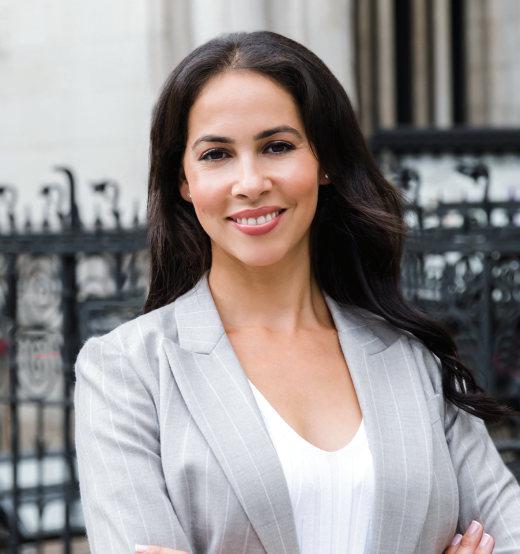
Image Credit: Mimoza Fleur
Somaya Ouazzani is the CEO and founder of Mimoza Fleur.
A CRITICAL NEED FOR GLOBAL COLLABORATION ON CLEAN ENERGY TRANSITIONS
Top international energy and climate leaders from more than 40 countries took part in the IEACOP26 Net Zero Summit on 31 March to identify how to work together to reduce global greenhouse gas emissions and meet the goals of the Paris Agreement.
THE NET ZERO summit, co-hosted by IEA executive director Fatih Birol and COP26 president Alok Sharma, brought together highlevel representatives of energy and climate ministries from countries including Australia, Brazil, China, Colombia, France, Germany, India, Indonesia, Italy, Japan, South Africa, the United Kingdom and many others. Participants from a broad crosssection of civil society groups, private companies and government institutions also took part in the discussions.
The Summit is a critical milestone on the road to COP26 in Glasgow in November. It brought together representatives of countries covering more than 80% of global GDP, population and emissions. High-profile participants included Zhang Jianhua, China’s minister of energy; Frans Timmermans, executive vice-president of the European Commission; Raj Kumar Singh, India’s minister of power, new and renewable energy; and John Kerry, the USA presidential special envoy for Climate; Amani Abou-Zeid, African Union commissioner for Infrastructure and Energy; and Ngozi Okonjo-Iweala, directorgeneral of the World Trade Organisation (WTO).
“It is time for the world to move from a decade of climate change deliberation to a decade of delivery. The UK strongly encourages countries to endorse the IEA’s seven principles for achieving net zero. Today's Summit clearly showed willingness from governments, civil society and businesses to work together in each emitting sector to make this happen and keep the 1.5 degree target within reach,” said Alok Sharma, the COP26 president.
Many IEA member governments supported the seven key principles presented by the IEA at the Summit to guide the implementation of net zero commitments. The principles cover essential areas such as the need for sustainable recoveries from the Covid-19 crisis, the critical importance of implementable emissions reduction roadmaps for the current decade, and the development of stronger mechanisms for international coordination to accelerate innovation and deployment in each major emitting sector of the global economy.

IEA principles address issues such as technology collaboration, best practice sharing, investment tracking, ensuring peoplecentred transitions etc.
No country can do this alone: Birol
“If we want the transition to clean energy to happen quickly, the world’s major economies have to work much more effectively and closely together. The Summit’s Key Principles show what needs to happen, and I offer the IEA’s full support for the UK COP26 presidency’s efforts to strengthen the international cooperation mechanisms that will accelerate our transition to net zero.”
To support stronger government actions, the IEA on 18 May will publish the first comprehensive roadmap for the global energy sector to reach netzero emissions by 2050. Requested by the COP26 Presidency as a key input, the roadmap will set out a pathway for what is needed from governments, companies, investors and citizens to put global emissions on a path in line with a temperature rise of 1.5 degrees.
OWI WA LINED UP FOR SEPTEMBER 2021
OWI West Africa 2021 is set to highlight topics such as the future of good well intervention, logistics and supply chain, production enhancement and well integrity, with new areas covering logistical challenges and solutions.
WEST AFRICAN OFFSHORE Well Intervention Conference (OWI West Africa 2021) is aiming for September 2021 in Accra, Ghana. The event, earlier postponed in response to the global COVID-19 pandemic, will address key themes such as cost reduction, overcoming logistical challenges and increasing well performance using the latest well intervention intelligence.
This is a platform to hear from regional and international offshore operators and well service companies at the cuttingedge of subsea innovation. OWI West Africa 2021 will cover topics such as the future of good intervention, logistics and supply chain, production enhancement, well integrity, and much more.
Now in its third year, the OWI WA Conference is leading West Africa in offshore well intervention and has established a robust platform for well intervention stakeholders to share industry best practice.
With West Africa’s largest markets Nigeria and Angola recognising the need for increased well intervention activity and growing markets such as Ghana planning for the future of their green fields, there has never been a better time to get involved.
OWI WA 2021 content focuses on: 6 Logistics: Engage with major
operators to understand past challenges and successes regarding getting tools in country, vessel sharing, and sourcing locally. 6 Technology and Equipment:
Learn how to reduce costs by exploring the latest technology and discuss the importance of new
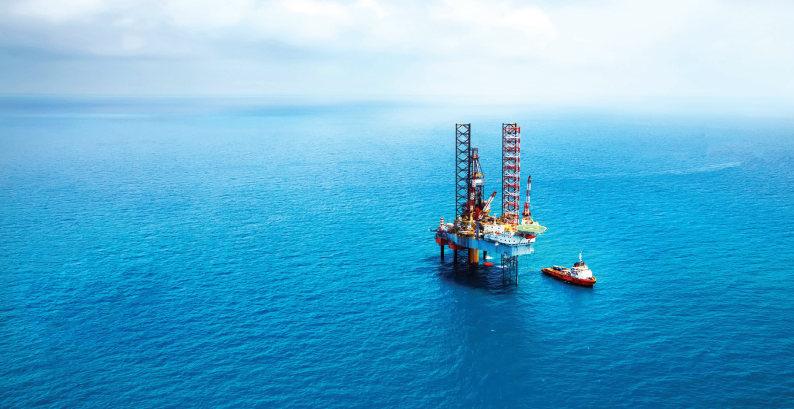
The event will discuss major topics in the areas of West Africa's oil and gas sector.
The OWI WA Conference has established a robust platform for well intervention stakeholders to share industry best practice.”
technology acceptance. 6 Rigless and Light Well
Intervention: See rigless case studies throughout West
Africa showcasing the benefits it brings operators. 6 Mature Wells and Increasing
Productivity: Increase profitability by making the most of existing assets by examining successful solutions to common problems. 6 Regulations: Keep informed with the latest policy and regulation and how they impact on well intervention projects to stay ahead of the game. 6 Benefiting Local Economies:
Examine emerging practices in locally-developed solutions, championing independent regional companies, see the potential for local
economic growth. OWI WA 2021 has gathered influential speakers from operators, regulatory bodies and world leading service companies to share their expertise on the latest well intervention techniques and intelligence. The impressive line-up of speakers includes Chiwuike Amaechi, subsea systems and intervention engineer, Shell Nigeria; Dr Wisdom Enang, design engineering lead, ExxonMobil; Matthew Eghan, subsea engineering lead, Tullow Oil; Ato Debrah, senior petroleum engineer, Ghana National Petroleum Corporation; Segun Lanade, logistics supervisor, Shell Nigeria; Geraldo Ramos, senior production engineer, Sonangol.

